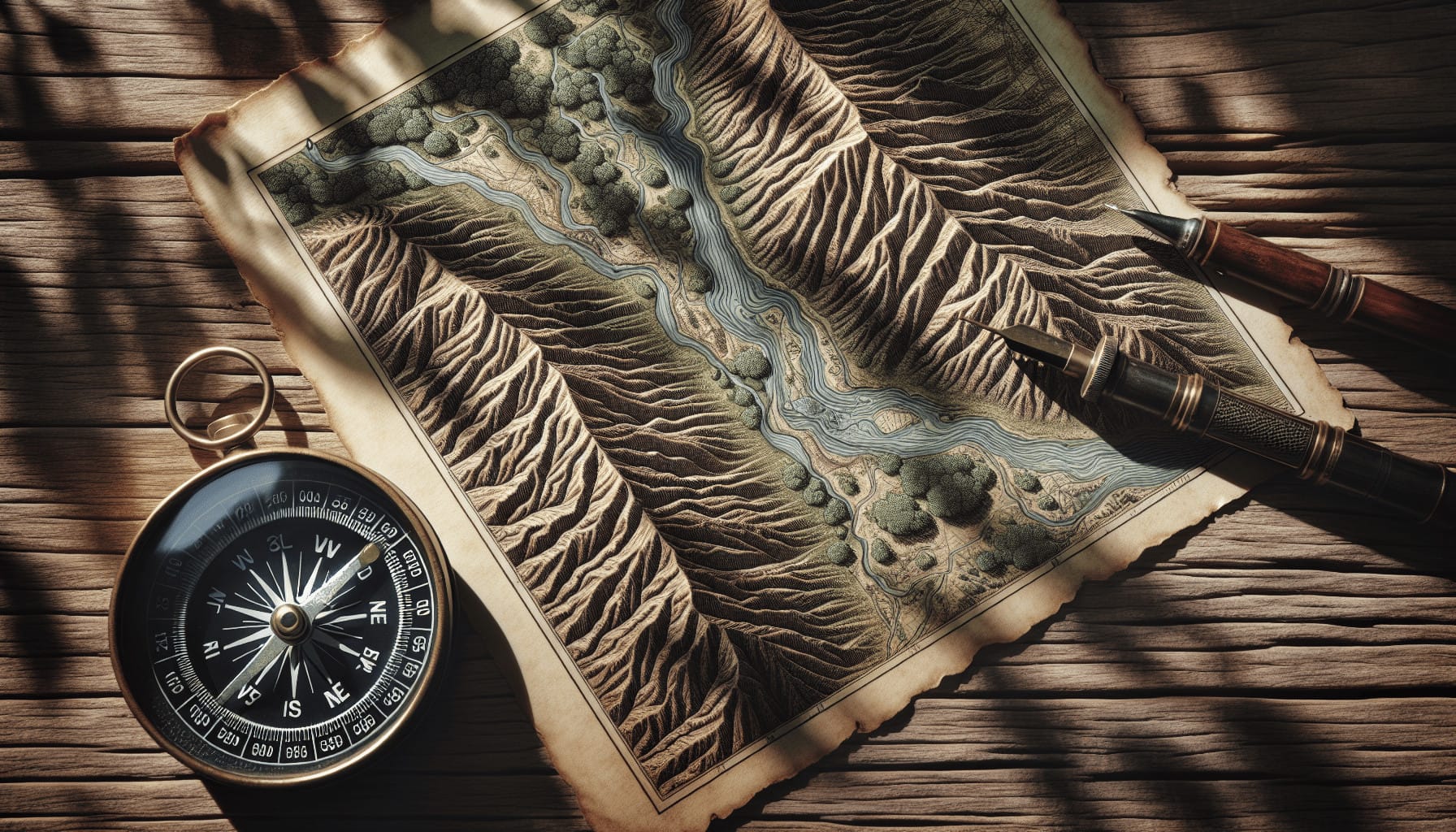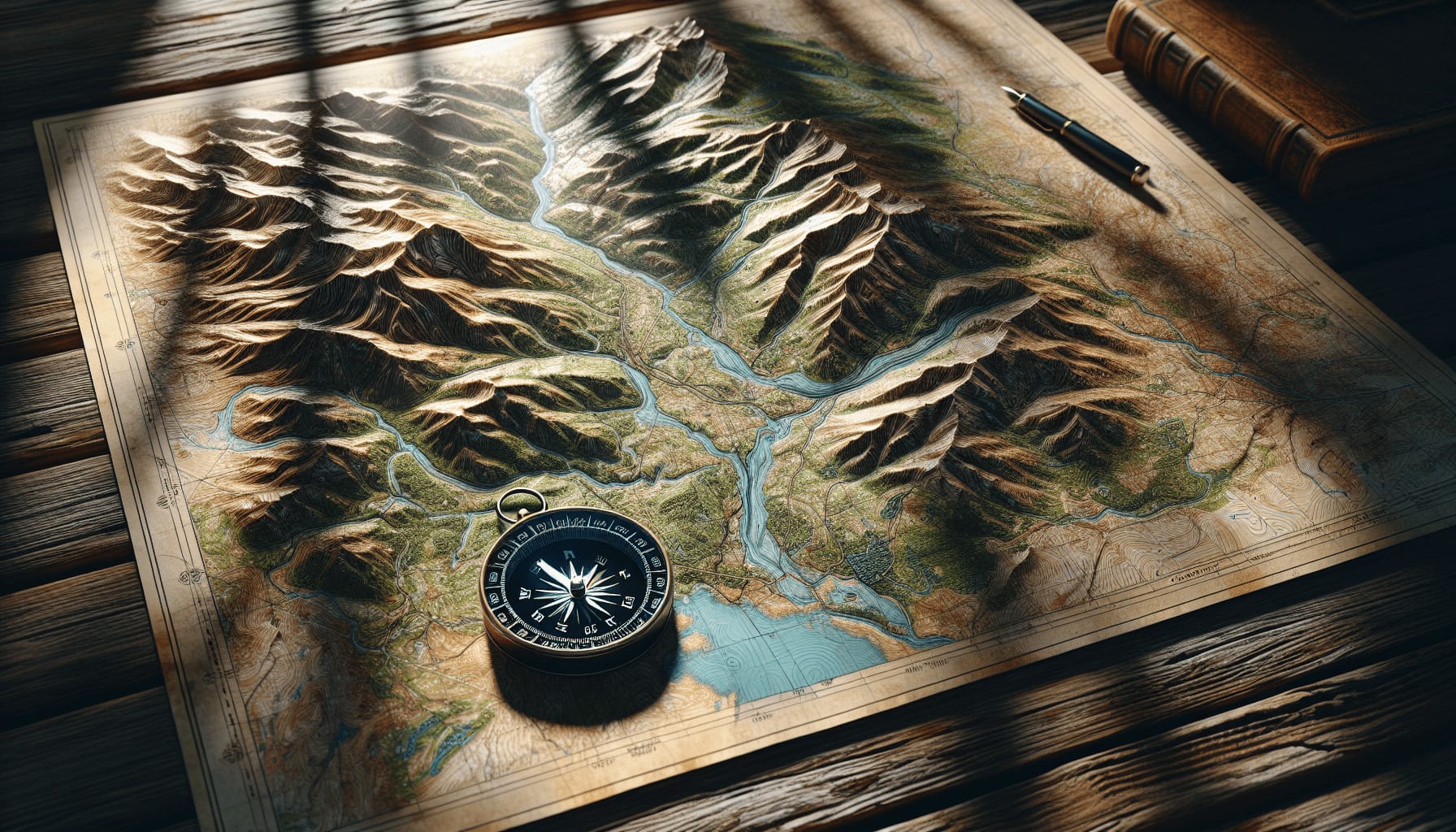Have you ever found yourself in the wilderness, relying solely on your instincts to find your way back? Wilderness navigation is an essential skill for anyone venturing into natural landscapes, far from the convenience of street signs and GPS devices. It’s not just about avoiding getting lost; it’s about appreciating the topography, understanding your environment, and ultimately feeling more connected to the earth beneath your feet. In today’s fast-paced, technology-driven world, this ancestral skill has become even more valuable, as it allows you to disconnect from the digital haze and engage more deeply with nature.
Within the realm of wilderness navigation, mastering the use of handrails and catching features is crucial. These techniques, when understood and applied correctly, can dramatically enhance your ability to navigate unmarked trails and challenging terrains. In this detailed exploration of wilderness navigation, you’ll learn how to effectively use natural landmarks and terrain features to guide your path. Whether you’re an experienced hiker or a newcomer to the great outdoors, familiarizing yourself with these techniques is invaluable—not just for ensuring your safety, but also for enhancing your overall wilderness experience.

Understanding Wilderness Navigation
Wilderness navigation involves the skillful use of natural terrain and landmarks to determine your position and direction in unmarked or minimally marked areas. This skill is vital for ensuring safety and efficiency while traveling through unknown territories. Unlike urban environments, where navigation typically relies on maps, signs, and technology, wilderness navigation demands a more hands-on and perceptive approach.
Importance of Wilderness Navigation
Wilderness navigation is not simply a skill; it is a life-saving ability. Whether you’re on a short day hike or a long backpacking trip, understanding how to navigate the wilderness can keep you safe and calm in unexpected scenarios. Moreover, developing this skill enhances your outdoor adventures by fostering a deeper connection with the natural world.
Terrain and Natural Features
A critical component of wilderness navigation is familiarity with the terrain and natural features. By observing the landscape, including mountains, rivers, and valleys, you can create a mental map to help guide your journey. Every aspect of the terrain holds potential to serve as a navigational aid, if interpreted accurately.
Utilizing Handrails
Handrails in wilderness navigation are linear features that you can follow to maintain a specific direction. These can be natural formations such as rivers, ridges, and trails, or man-made structures like roads and power lines. Handrails provide a reliable guide to help keep you on your intended path, ensuring you reach your destination without unnecessary detours.
Types of Handrails
Natural Handrails
Natural handrails include features like rivers and ridges, which you can use to align yourself and maintain direction. For example, if your destination is located adjacent to a flowing river, you can follow the riverbank to find your way efficiently. Here’s a quick breakdown:
| Natural Handrail | Example | Navigation Tip |
|---|---|---|
| River | Following the river downstream | Stay close to the riverbank for an easy guide |
| Ridge | Walking along a ridge top | Use the ridge for a high-ground perspective |
Man-made Handrails
Man-made handrails can be incredibly useful in wilderness settings due to their predictability and continuity. Examples include roads, fences, and power lines. These features provide a consistent and visible guide even when you navigate unfamiliar areas.
Choosing the Right Handrail
Selecting the most appropriate handrail depends on your specific environment and destination. Consider factors like the terrain type, visibility, and whether you’re aiming for a particular landmark. Prioritize features that align with your direction of travel and offer minimal obstacles.
Recognizing Catching Features
Catching features are large, easily identifiable landmarks that signal when you have traveled too far. They can help you avoid wandering off course and serve as checkpoints to verify your position on your route. Recognizing these features ensures you don’t overshoot your destination.
Types of Catching Features
Natural Catching Features
Natural catching features are major landscape components such as mountains, lakes, or large valleys. They are often visible from great distances and can act as critical navigational aids.
| Natural Catching Feature | Description | Usage |
|---|---|---|
| Mountain | Large, prominent elevation | Use as a waypoint to confirm location |
| Lake | Distinct body of water | Adjust direction upon sighting |
Man-made Catching Features
Like natural features, man-made structures can also serve as catching features. These include structures like buildings, bridges, or towers, which can be significant indicators of your location.
Integrating Catching Features
Incorporating catching features requires an understanding of the surrounding landscape. Knowing where these features are in relation to your route enables you to ascertain your progress and redirect if necessary. Plan your route with intentional catching features strategically placed to alert you of your overshoot, enhancing safety and efficiency.
Combining Handrails and Catching Features
Mastering wilderness navigation entails skillfully combining handrails and catching features. This integration provides a comprehensive navigational plan, enhancing your ability to traverse various terrains with confidence. By employing both techniques, you establish a reliable framework that supports you throughout your wilderness excursion.
Route Planning
When planning your route, intentionally integrate handrails and catching features. Begin by identifying potential handrails that will guide your path, then mark catching features that will serve as checkpoints or boundaries. This preparation phase is crucial, setting the foundation for a successful and safe journey.
Practical Implementation
During your hike, actively use oral or written reference points of your selected handrails and catching features. Be observant and flexible, ready to adapt to changes in the landscape. If a planned handrail becomes inaccessible, identify an alternative path incorporating available natural or man-made elements.
Advantages of Combined Use
The dual usage of handrails and catching features enhances your navigational accuracy and efficiency. This strategic combination ensures you have constant directional support and helps prevent overshooting your destination. It empowers you to confidently explore the wilderness while minimizing navigational errors.

Challenges and Considerations
While handrails and catching features are invaluable, navigating the wilderness can still present challenges. Being aware of potential obstacles and planning contingencies is crucial for adapting to unforeseen changes in the terrain or weather.
Environmental Factors
Factors such as weather, visibility, and seasonal changes profoundly influence wilderness navigation. Rain, fog, or snow can alter landscapes and obscure catching features, making it imperative to have multiple navigation strategies.
Personal Factors
Your physical and mental preparation significantly impact wilderness navigation. Ensure you have adequate supplies, clothing, and mental readiness before heading out. Your ability to interpret the landscape accurately depends on sharp observational skills and the ability to stay calm under pressure.
Conclusion
Navigating the wilderness using handrails and catching features is a unique interplay of strategy, observation, and intuition. By integrating these elements into your navigational toolkit, you enhance your ability to move safely and efficiently through nature’s vast landscapes. As you refine your skills, each journey into the wild becomes an opportunity to connect more deeply with the earth and yourself, fostering resilience and a sense of adventure. Remember, the wilderness is as much about the journey as it is about the destination, and effective navigation helps ensure you relish every moment spent in the great outdoors.
